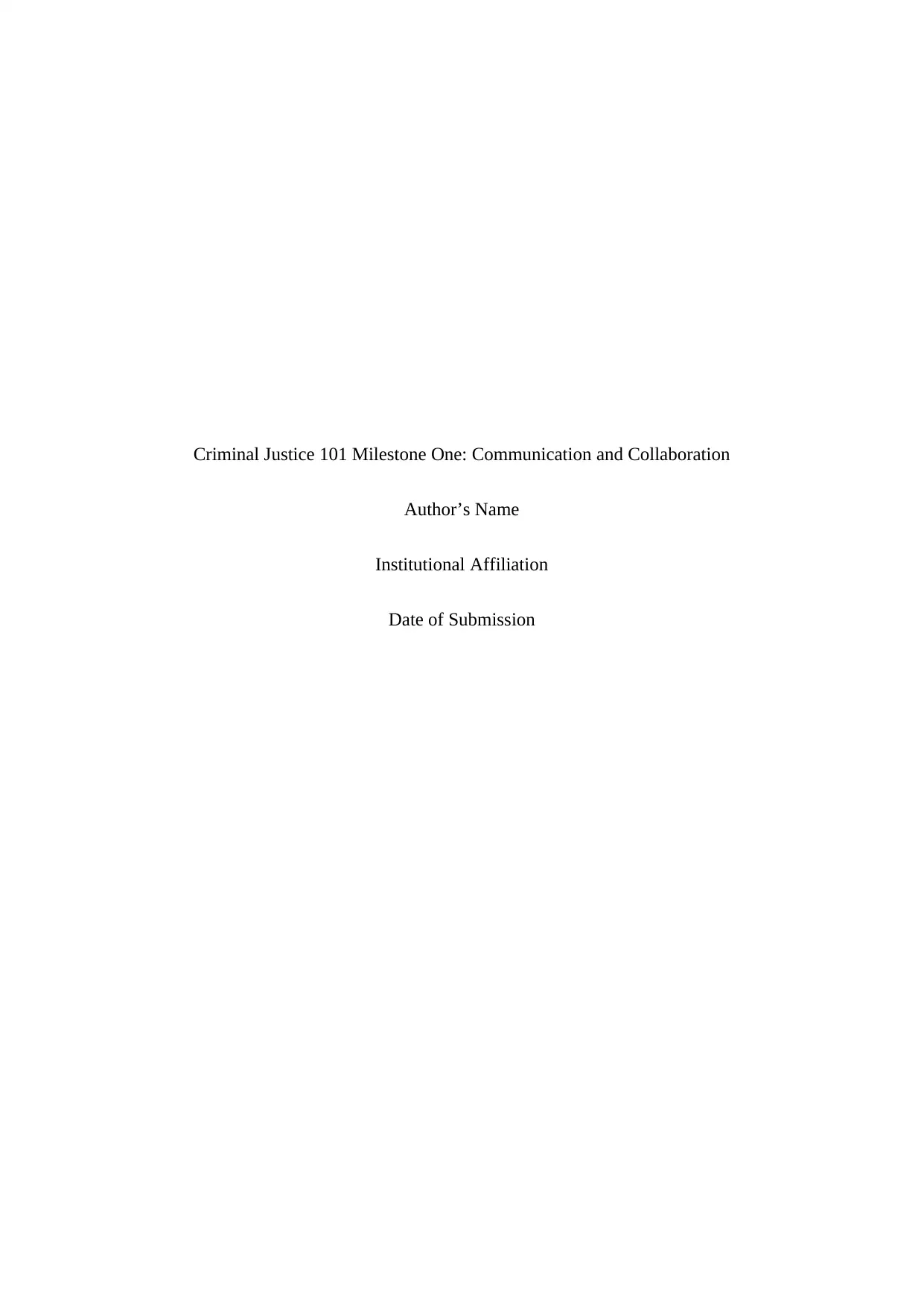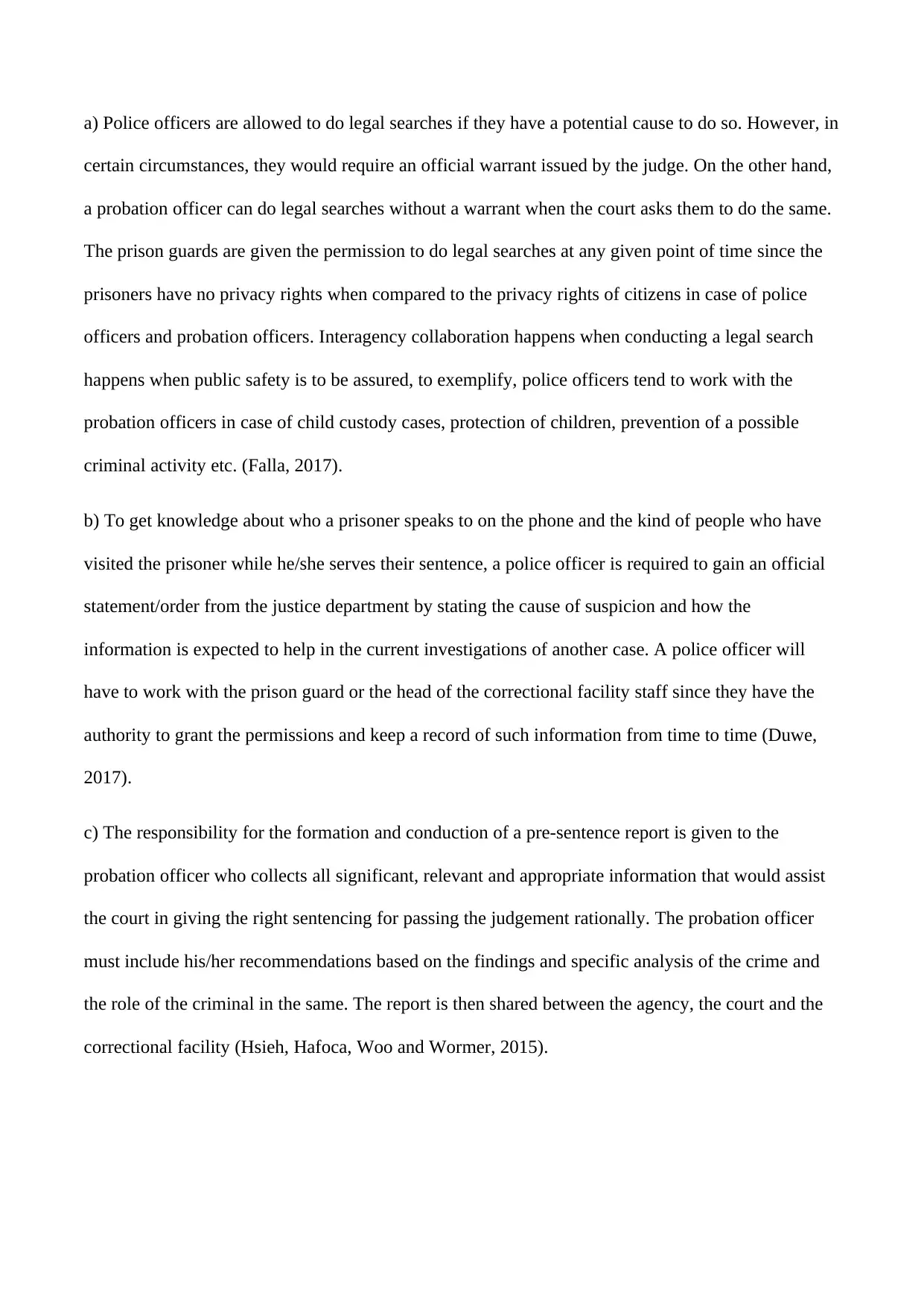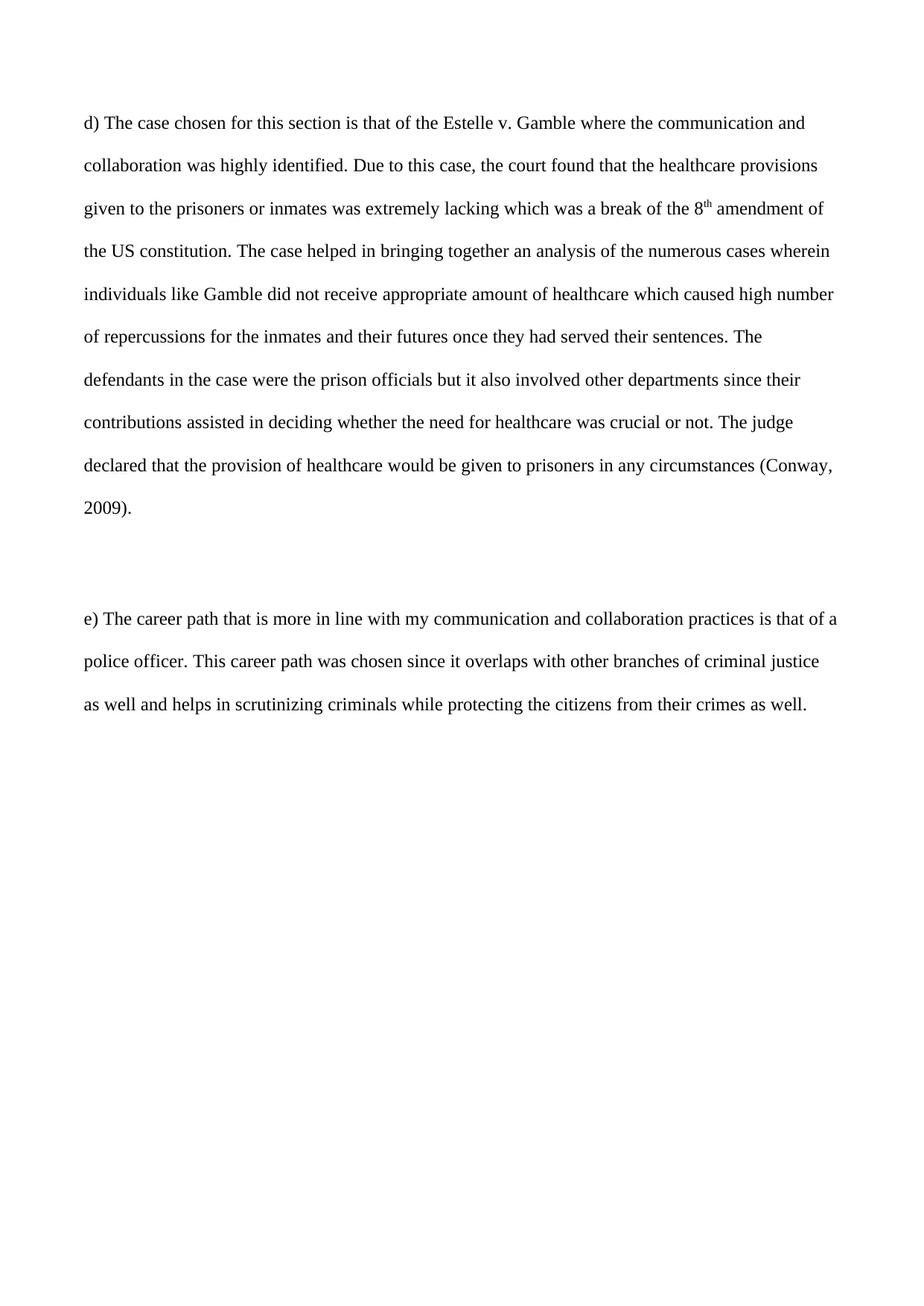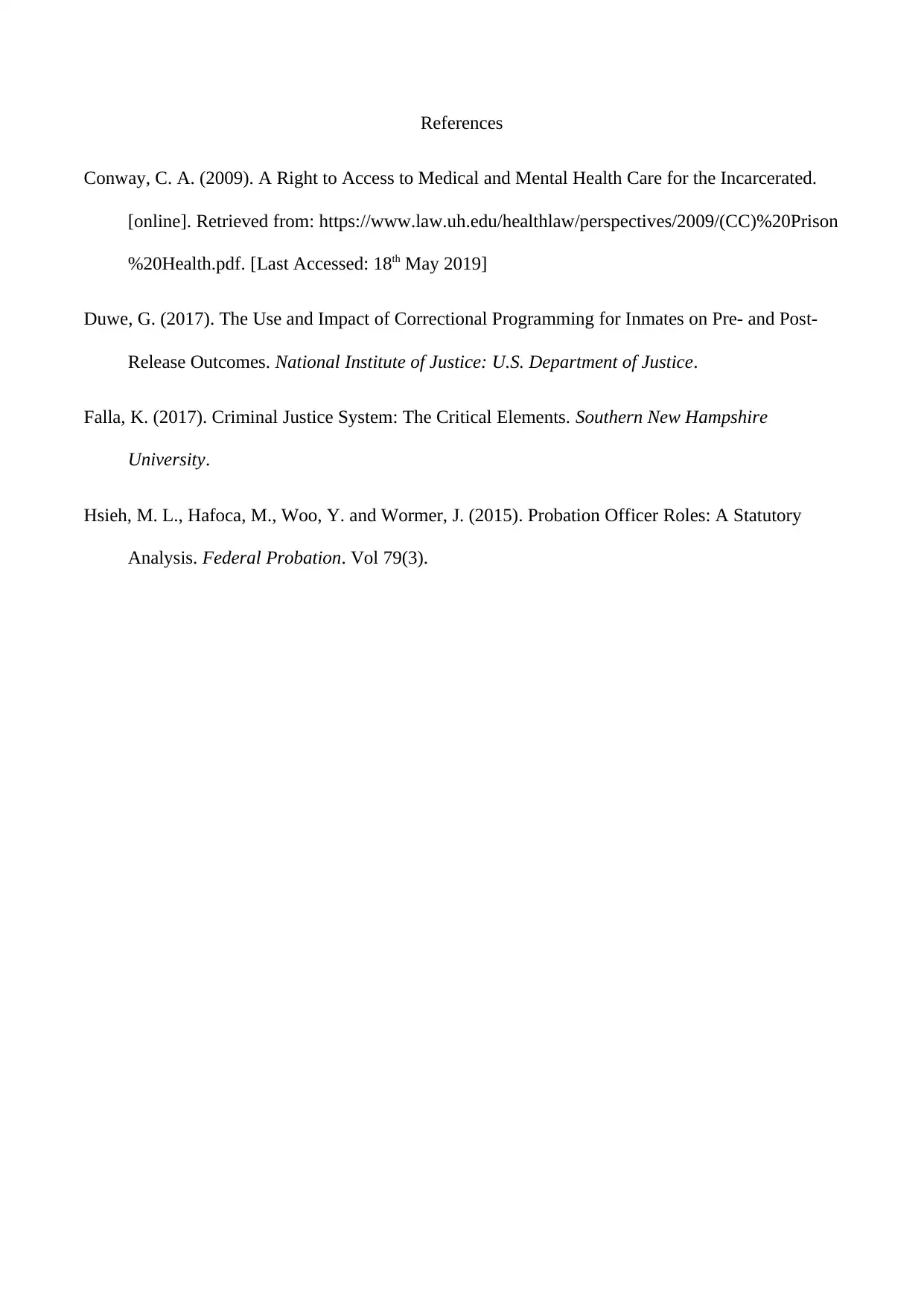Criminal Justice 101: Milestone One - Communication and Collaboration
VerifiedAdded on 2023/03/23
|4
|731
|36
Homework Assignment
AI Summary
This assignment solution addresses the importance of communication and collaboration within the criminal justice system, as required for JUS 101 Milestone One. It explores the differing abilities of police officers, probation officers, and prison guards to conduct legal searches, emphasizing the need for warrants and the context of prisoner privacy. The solution also examines the process of obtaining information about prisoner communications and visitors, detailing the necessary steps for police officers to collaborate with correctional facility staff. Furthermore, it outlines the role of probation officers in creating pre-sentence reports, including information gathering, analysis, and recommendations. The assignment also analyzes the Estelle v. Gamble case, highlighting its impact on healthcare provisions for inmates and the interagency collaboration it necessitated. Finally, the solution identifies the career path of a police officer as most aligned with effective communication and collaboration practices, underlining the need for scrutiny and protection of citizens.
1 out of 4









![[object Object]](/_next/static/media/star-bottom.7253800d.svg)